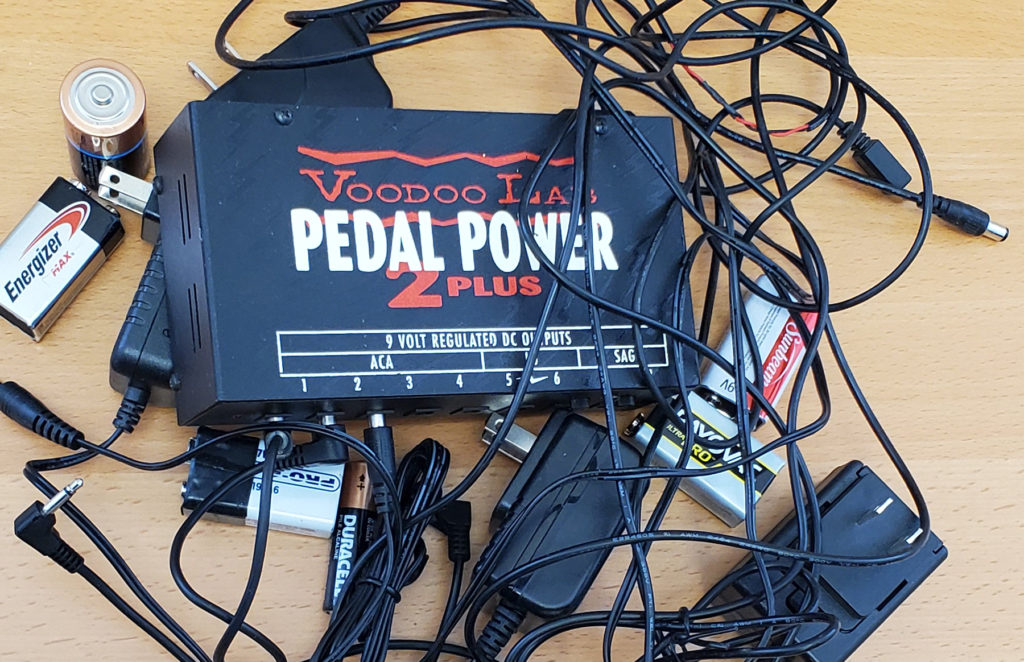
You got the board. You got the pedals. You got the cables. Now you have to power it. There are many options, each with its own positives and negatives. (See what we did there?)
1. Use an outlet strip with multiple wall worts. This is the original DIY solution. Get an outlet strip, velcro, and cable ties and make it work.
- Advantages: Each pedal has its own isolated supply which eliminates ground loops. Each pedal runs safely on its own recommended supply.
- Disadvantages: Bulky and heavy. Lots of wires and things could get messy.
2. Use a single power supply with a daisy chain connector. This option came out in the ’80s and usually worked best when using pedals from a single manufacturer (such as Boss). As pedalboards became larger, new variations on this theme were introduced to meet new demands – high power switching power supplies with daisy chains, adapter cables to reverse polarity or change the voltage. An important thing to make note of in this scenario are ground loops. Ground loops can introduce unwanted noise such as hiss, hum, buzz, or whine (clock noise from digital interference) because there isn’t a single clear path to ground for interference to be drained. Stacking drive pedals with a daisy chain can boost the hum and who wants that? Ground loops between digital pedals, or pedals that contain internal clocks (delay, chorus), can cause the different frequencies of the clocks to combine and end up in the audio path. You surely don’t want to hear a fax machine coming out of your rig.
- Advantages: Economical way to power multiple pedals from a single supply. Switching versions can run on 100-250VAC (worldwide).
- Disadvantages: Most versions provide a single output voltage. Ground loops that introduce unwanted hum and noise. Routing the daisy chain can be challenging and messy. Some pedals will NOT operate in a daisy chain (germanium fuzzes and some modern EHX pedals).
3. Use a single power supply with multiple isolated outlets (such as Pedal Power, Dunlop DC Brick, Cioks and others). This is an option we prefer and recommend to customers. It is the most reliable, versatile (multiple voltage options) and best performing solution. There are many variations available with lots of cool options to choose from – variable voltage outputs, reverse polarity, the ability to output AC or DC. It’s like they thought of everything!
- Advantages: Clean, quiet power. Isolation eliminates ground loops and noise. More voltage options. More cabling and connector solutions.
- Disadvantages: Priciest option. Some only work on a single voltage (i.e., 120V AC only with no option for other countries).

